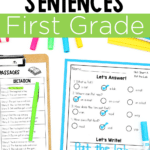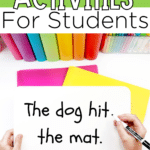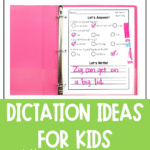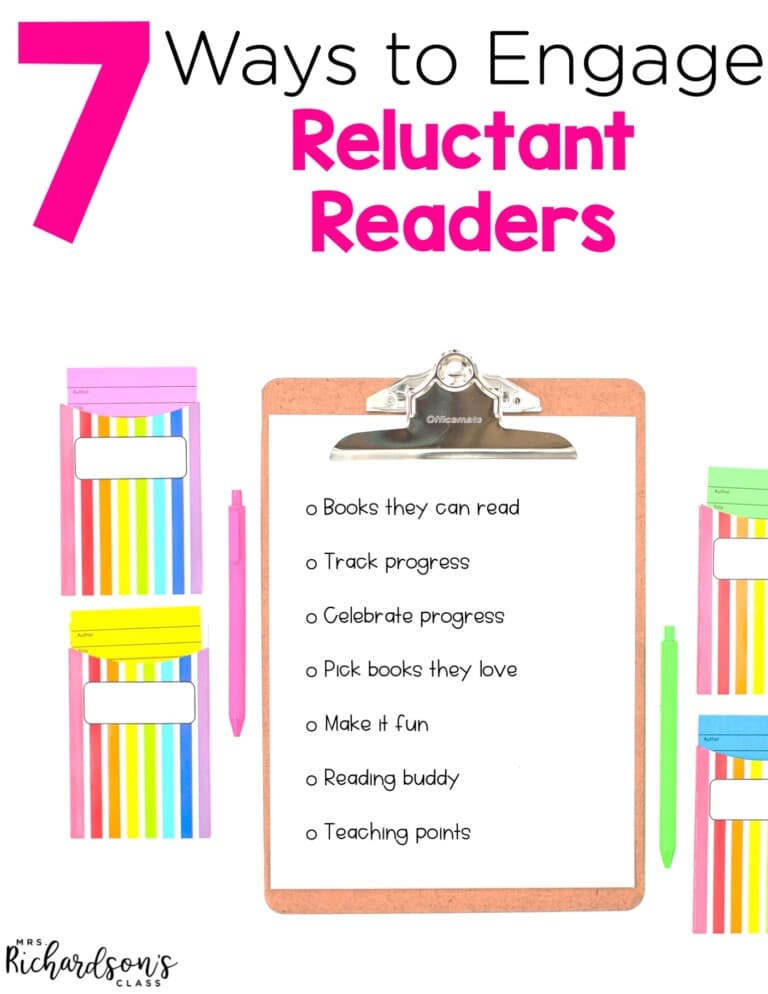

My sweet teacher friend shared this story, and I immediately knew we needed it for this blog post as we talk about the importance of dictation activities for students!
My daughter was in our playroom trying to write the word slide. She asked me, “Mom, how do you spell the word slide?” I was in the kitchen cooking, so I yelled to her, “/s/ /l/ /ī/ /d/ silent e.” She brought me her whiteboard to check. She read the word slide and told me the letters she had written. “Awesome job!” I told her.
Let’s look at the value of what happened. When they engaged in this quick activity (while she was making dinner), her daughter had to use her listening, writing, reading, and spelling skills to write the word she had dictated. She also got immediate feedback as they checked it together. A win all around!
Dictation is not a new idea by any means! I used it pretty consistently when I taught in the classroom during writing conferences with students, reading small group lessons, and weekly for practice. Do you use dictation in your classroom? Let’s chat about what dictation is, why it is important, and how to use it in your classroom.

Dictation is simply writing down what someone else has said. In the classroom, it is when students write down what you have said. You may ask students to write letters representing a sound(s), a word, or a sentence.
There are so many benefits to using dictation, and it can be done quickly!
There are many different ways to use dictation in your classroom! You could use it as a whole group activity with your phonics lesson, or you could use it in your reading small groups. An easy way to incorporate this into your reading small groups is to create a sentence that has many words with the phonics skill you practiced in the book.

You could have your students write a sentence about what they did in science that day.
You could ask them to write the letters that represent the review phonics sounds you have been learning.
You can easily incorporate it into your morning message time, too! In this example below, we would read our morning message together, then fill in the blank for the date. Then, we would discuss community workers we had been learning about. Finally, I would dictate some sounds and they would use their whiteboards to write the sounds and hold them up for only me to see.
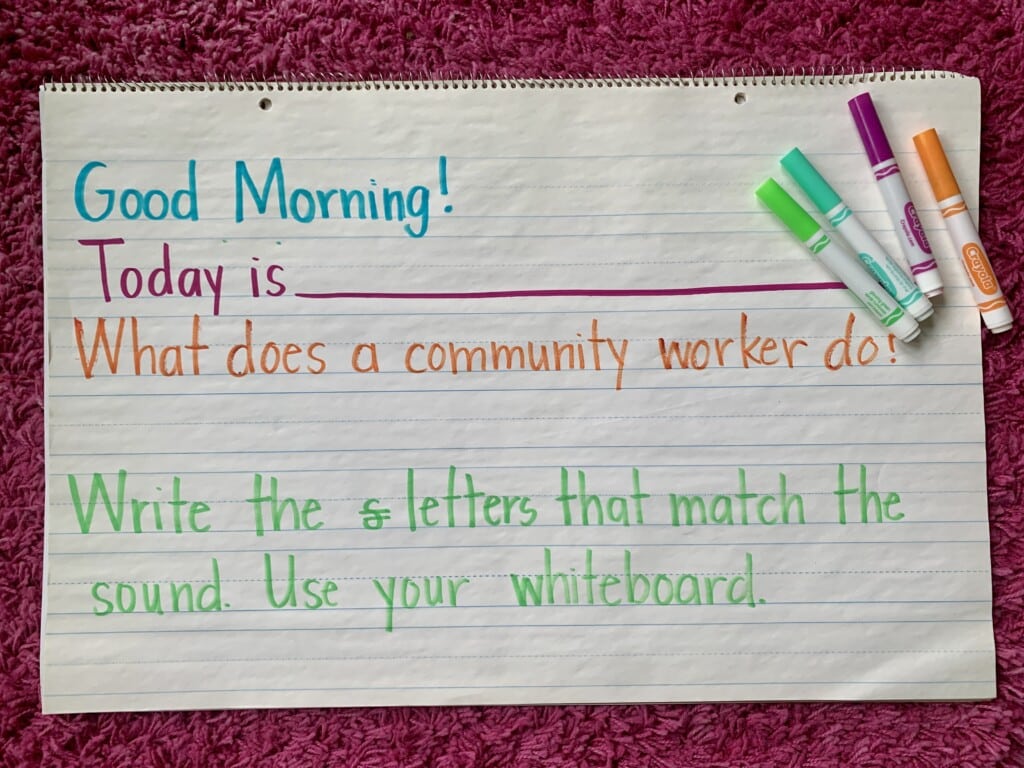
Are you looking for reading small group decodable readers that have sentences already created with dictation? I have sets of decodable readers. I also have decodable passages with a space for students to write a sentence you dictate to them!
Get them HERE onTeachersPayTeachers!
Get them HERE on the website shop!
Do you use dictation activities for students in your classroom? When do you use it? I’d love to hear your answers to these questions in the comments below.

pin it for later

Want to use the latest research to boost your readers during small groups? This FREE guide is packed with engaging ideas to help them grow!

I’m a K-1 teacher who is passionate about making lessons your students love and that are easy to implement for teachers. Helping teachers like you navigate their way through their literacy block brings me great joy. I am a lifelong learner who loves staying on top of current literacy learning and practices. Here, you’ll find the tools you need to move your K-2 students forward!


| Cookie | Duration | Description |
|---|---|---|
| cookielawinfo-checkbox-analytics | 11 months | This cookie is set by GDPR Cookie Consent plugin. The cookie is used to store the user consent for the cookies in the category "Analytics". |
| cookielawinfo-checkbox-functional | 11 months | The cookie is set by GDPR cookie consent to record the user consent for the cookies in the category "Functional". |
| cookielawinfo-checkbox-necessary | 11 months | This cookie is set by GDPR Cookie Consent plugin. The cookies is used to store the user consent for the cookies in the category "Necessary". |
| cookielawinfo-checkbox-others | 11 months | This cookie is set by GDPR Cookie Consent plugin. The cookie is used to store the user consent for the cookies in the category "Other. |
| cookielawinfo-checkbox-performance | 11 months | This cookie is set by GDPR Cookie Consent plugin. The cookie is used to store the user consent for the cookies in the category "Performance". |
| viewed_cookie_policy | 11 months | The cookie is set by the GDPR Cookie Consent plugin and is used to store whether or not user has consented to the use of cookies. It does not store any personal data. |
